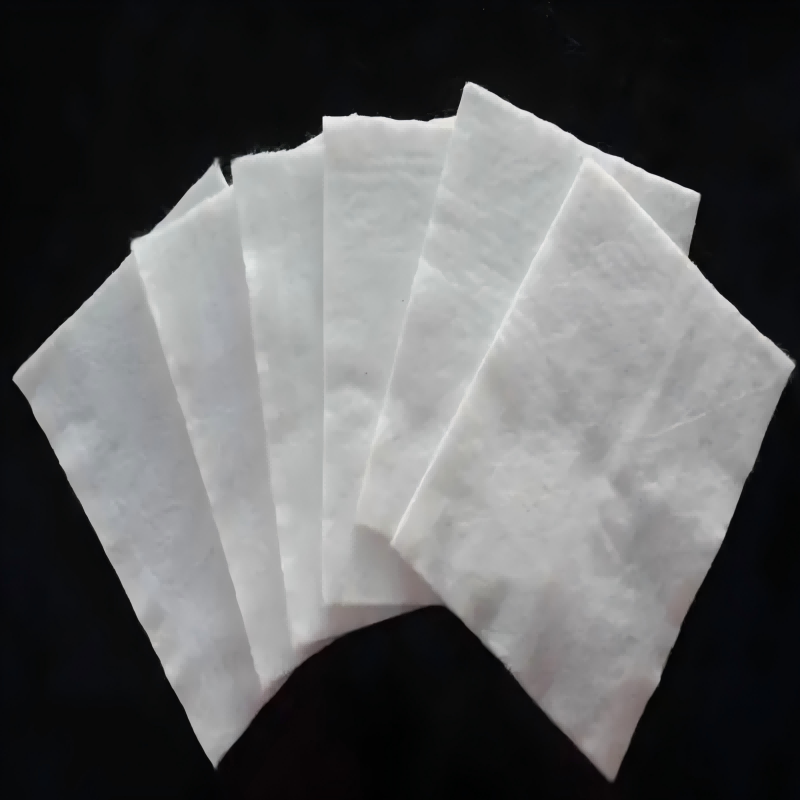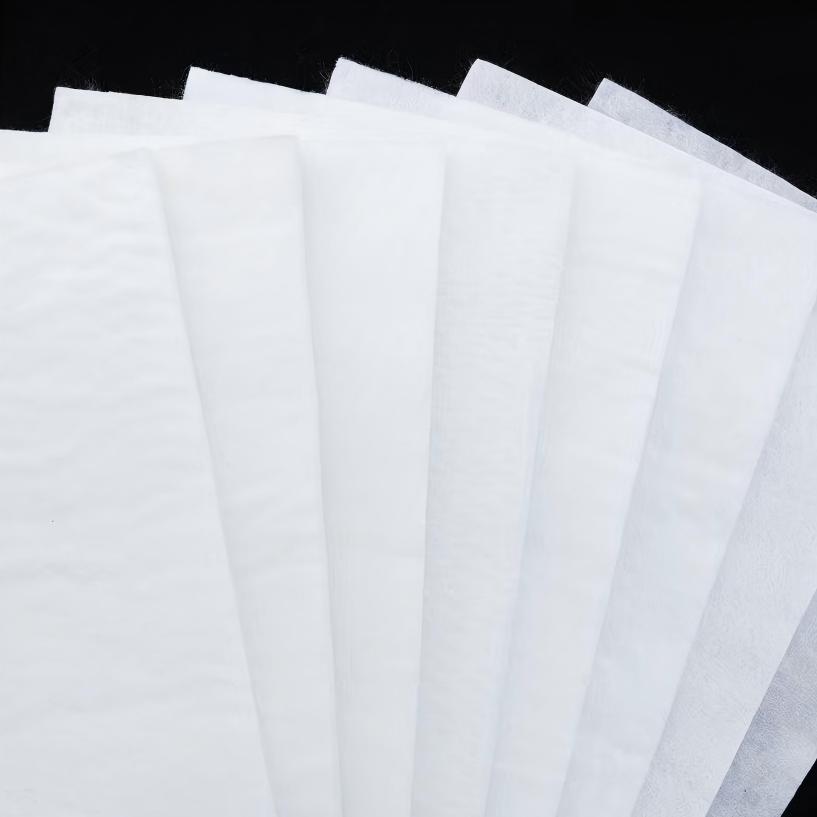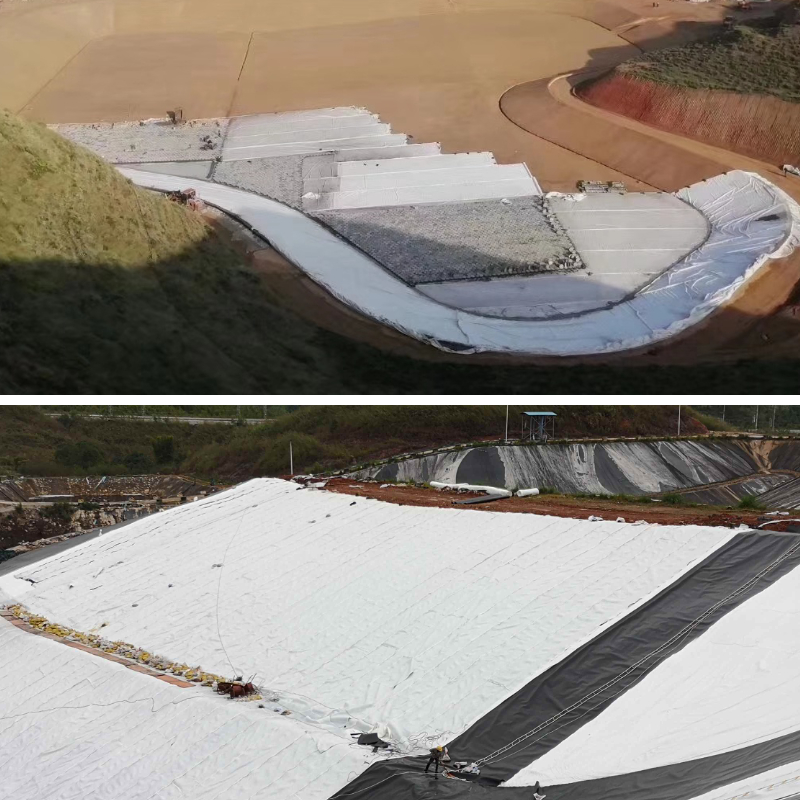Hi Vis Geotextile
1.Eye-catching Warning: Bright orange color can intuitively mark underground hazards and remind subsequent construction to avoid risks.
2.Isolation & Anti-mixing: Can separate different soil layers (e.g., contaminated and clean soil) and prevent particle migration.
3.Rapid Construction: Large-sized roll design enables convenient laying and quick coverage of large areas.
4.Durability & Anti-damage: Possesses good strength and UV resistance, and can withstand complex underground environments for a long time.
Product Introduction
I. Basic Properties
Hi Vis Geotextile are functional nonwoven/woven geosynthetics with two core physical properties: First, their base material, mostly polypropylene (PP) or polyester (PET) fibers, provides the weather and corrosion resistance of geosynthetics. Second, their visual identification is prominent. The default color is a highly saturated orange (a few are fluorescent yellow), meeting the "high-visibility warning color" standard in the engineering field and enabling rapid identification in complex construction environments.
II. Core Functions
Risk Warning Function: Highly visible colors are used to mark critical underground areas (such as contaminated soil boundaries, pipeline routes, and hidden engineering locations). This prevents subsequent excavation and drilling operations from damaging these areas, reducing safety incidents and project rework.
Soil Isolation Function: Acting as a physical barrier to separate different soil layers (such as contaminated soil from clean soil, backfill from original soil), prevents the migration of soil particles and contaminants, and maintains soil structural stability.
Foundation Protection Function: Leveraging the tensile and puncture resistance of the fiber material, it can help protect vulnerable soil layers or pipelines beneath, minimizing physical damage from construction machinery and material accumulation.
III. Key Features
Highly visible: Highly visible colors (such as orange) offer exceptional contrast in construction environments like soil and gravel, enabling quick location without additional marking. Suitable for a variety of construction scenarios, including daylight and low-light conditions.
Efficient Construction: Available in large rolls (commonly 4.5m/6m width and 100m length), this lightweight and easy-to-cut material can be laid by a single or small team, significantly shortening the construction cycle for large-scale projects.
Outstanding Durability: The material is stabilized with UV rays to withstand underground moisture, temperature fluctuations, and microbial attack, preventing color fading and material degradation, extending the service life of the project.
Excellent Functional Compatibility: While retaining the isolation and protective properties of traditional geotextiles, it also adds a warning function, eliminating the need for an additional warning layer. This reduces material usage and construction steps, achieving both practicality and cost-effectiveness.
Product Parameters
project | metric | ||||||||||
Nominal strength/(kN/m) | |||||||||||
6 | 9 | 12 | 18 | 24 | 30 | 36 | 48 | 54 | |||
1 | Longitudinal and transverse tensile strength / (kN/m) ≥ | 6 | 9 | 12 | 18 | 24 | 30 | 36 | 48 | 54 | |
2 | Maximum elongation at maximum load in longitudinal and transverse directions/% | 30~80 | |||||||||
3 | CBR top penetration strength /kN ≥ | 0.9 | 1.6 | 1.9 | 2.9 | 3.9 | 5.3 | 6.4 | 7.9 | 8.5 | |
4 | Longitudinal and transverse tearing strength /kN | 0.15 | 0.22 | 0.29 | 0.43 | 0.57 | 0.71 | 0.83 | 1.1 | 1.25 | |
5 | Equivalent aperture O.90(O95)/mm | 0.05~0.30 | |||||||||
6 | Vertical permeability coefficient/(cm/s) | K× (10-¹~10-), where K=1.0~9.9 | |||||||||
7 | Width deviation rate /% ≥ | -0.5 | |||||||||
8 | Unit area mass deviation rate /% ≥ | -5 | |||||||||
9 | Thickness deviation rate /% ≥ | -10 | |||||||||
10 | Thickness coefficient of variation (CV)/% ≤ | 10 | |||||||||
11 | Dynamic perforation | Puncture hole diameter/mm ≤ | 37 | 33 | 27 | 20 | 17 | 14 | 11 | 9 | 7 |
12 | Longitudinal and transverse fracture strength (grab method)/kN ≥ | 0.3 | 0.5 | 0.7 | 1.1 | 1.4 | 1.9 | 2.4 | 3 | 3.5 | |
13 | Ultraviolet resistance (Xenon arc lamp method) | Longitudinal and transverse strength retention rate% ≥ | 70 | ||||||||
14 | Ultraviolet resistance (fluorescence UV lamp method) | Longitudinal and transverse strength retention rate% ≥ | 80 | ||||||||
Product Application
1. Contaminated Site Remediation Projects
In projects such as industrial legacy contaminated soil remediation and chemical site desilting, this geotextile serves as a contamination boundary marker and barrier. Its striking orange color clearly identifies the excavation area of contaminated soil, preventing contamination of clean soil. It also physically separates contaminated soil from the surrounding environment, preventing the migration of heavy metals and organic pollutants through soil particles while providing a clear location marker for subsequent monitoring and secondary treatment.
2. Municipal and Road Infrastructure Projects
During roadbed construction, this geotextile is laid between the roadbed and backfill, separating soil layers of varying compaction levels and preventing roadbed settlement. It also provides a visible marker to prevent damage to the roadbed structure during subsequent pipeline and sidewalk construction.
After underground pipelines (such as water and gas pipes) are laid, this geotextile is laid above them as a hidden engineering warning layer, prompting subsequent excavation to avoid the pipeline location and reducing the risk of leaks caused by pipeline damage.
3. Landfill Projects
During the construction of landfill bottom anti-seepage systems and cover layers, it is used to separate different functional layers (such as the anti-seepage membrane and protective layer, and the leachate collection layer and backfill soil). The high-visibility color quickly distinguishes the boundaries of each layer, ensuring the correct construction sequence. It also prevents leachate from contaminating the surrounding soil, and the color allows for quick identification of key functional layers during subsequent maintenance.
4. River and Ecological Restoration Projects
During river dredging and ecological bank slope restoration projects, it is laid between dredging and non-dredging areas to mark the dredging boundary and avoid excessive excavation. It also separates silt from clean water, preventing turbidity during dredging that could affect aquatic life. The orange color is highly visible in aquatic environments, making it easier for construction personnel to control their work areas.
5. Temporary Construction Sites and Site Restoration Projects
When constructing temporary soil dumps and construction access roads, geotextiles are used to separate the soil from the original surface, preventing soil mixing. During subsequent site restoration, the color allows for quick cleaning and restoration of the original topography.
In mine reclamation and soil improvement projects, they mark the boundary between improved and unimproved soil, assisting in monitoring improvement results while preventing the improved layer from mixing with the underlying, inferior soil, ensuring the quality of the reclamation.
In summary, the application of high-visibility geotextiles revolves around two key principles: functional versatility and adaptability. Their isolation function addresses the mixing of different media (soil, water, and pollutants), ensuring project quality and environmental safety. Their high-visibility warning properties also provide intuitive identification for construction positioning, subsequent maintenance, and risk avoidance, significantly reducing the likelihood of project errors. Their application scenarios span pollution control, infrastructure, environmental protection, and ecological restoration, particularly in projects requiring clear boundaries and potential hazard prevention, making them a key material that balances practicality and safety.













